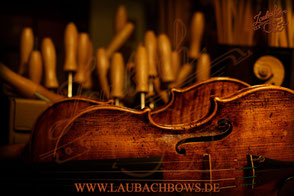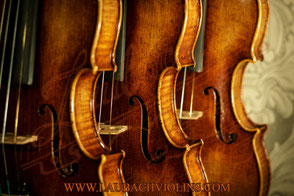Laubach FINE MASTER VIOLIN COLLECTION
There is often a waiting list for our instruments.
This is because we spend approximately two to three months on each instrument making sure they reach their full potential, enabling you, the player, to reach yours.
We want you to be happy with your purchase so all our instruments and bows are available for trial.
We pride ourselves on the quality of our work and our reputation has brought customers from from around the world.
What distinguishes the Laubach violin from other comparably priced instruments? The wood from which each violin is made is selected and cut from the Southern Bosnias and north Tyrol, the same wood preferred by makers from the time of Amati and Stradivari for its exceptional tonal properties. The top and back of each instrument is carefully graduated to the proper thicknesses and the bass-bar is strategically fitted to ensure a well-focussed, evenly balanced tone.
The careful workmanship of experienced Laubach luthier is your assurance of a well-crafted instrument with a superb tone to be enjoyed for years to come.
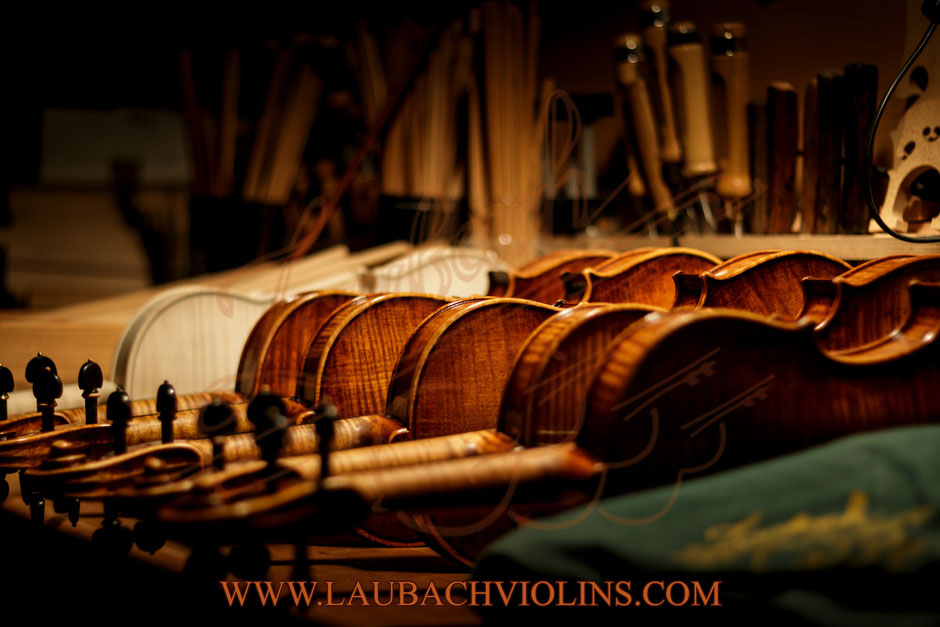
Being an engineer and violin maker myself, I give enormous importance to the visual aspects of my work, but my main concern is the sound. Intensity, clarity, projection and focus can never be left aside.
Making techniques and methods are similar to those of 268 or 388 years ago. I make and cook my own oil varnish that is based on a recipe in the Biblioteca Marciana, Venice, dated about 1558.
My instruments are meant for professional players and students approaching professional level. They are being played in Europe, United States and South America, not only in orchestras but also by soloists.
The Laubach workshop has these violins roughed out to our specifications. We then painstakingly regraduate fronts and backs to produce violins with a richness and warmth usually found only in more expensive old instruments. The careful application of a golden brown and old recipe varnish adds the finishing touch to these beautiful instruments. We simply can’t produce these outstanding violins fast enough!
Master violin model variants with old italian antique look from the Laubach violin workshop.
Laubach violin model 168 / 188 V
The Laubach master violin 168V Series. These violins incorporated patterns and moulds of their own design, based on the concepts they observed in the instruments made by Stradivarius, Guarnerius and other old fine violin makers.
The Laubach violin 188V Series represents an upgrade from the Laubach violin 168 V Series. These instruments are constructed with older, higher grade wood and superior varnish, giving them more power and projection. Limited Edition 168V, Antiqued: 18 years aged ton wood.
LAUBACH VIOLIN MODEL 268 V
These are concert grade master violins individually handcrafted in the traditional manner. The violins are modeled on an Nicolo Amati, Antonio Stradivari, Giuseppe Guarneri, Nicolo Gagliano, Carlo Bergonzi, Carlo Tononi, Giovanni Guadagnini, Francesco Ruggeri pattern. Other models are available on request.
These violins have secrets of fine craftsmanship, including both the aesthetics of a beautiful instrument and the physics behind superior tone quality. Limited Edition 268V, Antiqued: 38 - 50 years aged ton wood.
LAUBACH VIOLIN MODEL 888
The workshop Laubach has had unequalled success with violins by this outstanding violin model 888V. Of a narrow model and handsome antiquing no other in this price range can match its massive mature power and easy nuanced response. This instrument would be an excellent choice for an advanced student or young professional.
Laubach violin model 888V Orchestra Antiqued: 8 - 10 years aged ton wood.

Concert violins, violas, and violoncellos are made using traditional methods and historical models in the Bamberg atelier of workshop Laubach.
With a refined approach to developing the tonal potential of each violin, viola, and violoncello workshop Laubach are entrusted with the personal care of instruments belonging to soloists and students, collectors and dealers. As a full service shop, bow restoration and rehairing are available, as well as instrument sales.
Recent commissions for modern, classical, baroque, and renaissance works have been inspired by the late period works of Guarneri del Gesu, Peter of Venice, Maggini, Testore, and Gasparo da Salo.
We are giving to each instrument a distinctive personality!..
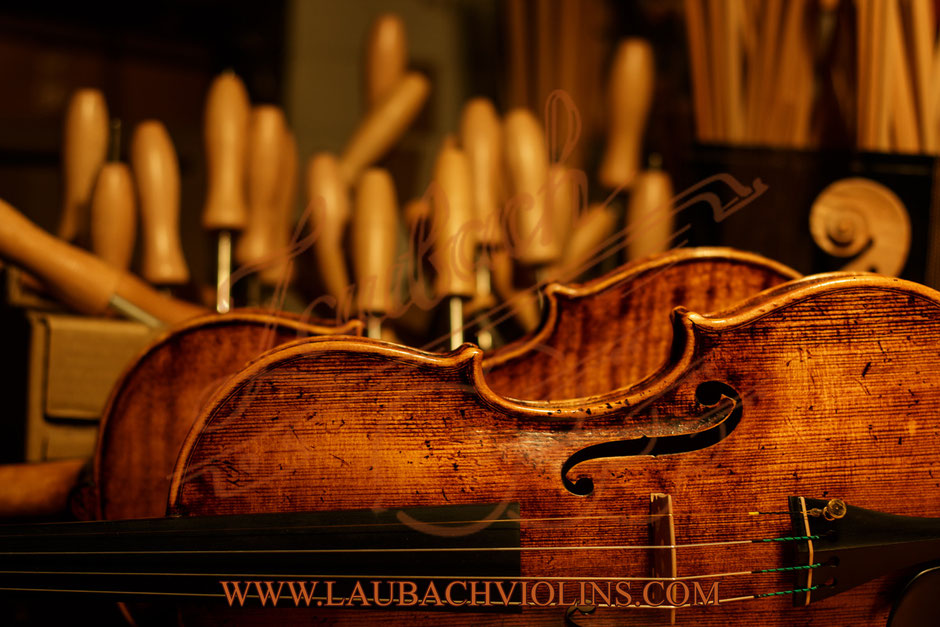
A Laubach Violin is hand made in the traditional manner, uses traditional materials, and shows it. Owners love the sparkling performance of their Laubach Violins as much as they do the traditional antique appearance — a result of the unique blend of old-school violinmaking with the latest in acoustic refinement.
Top-class Master instrument for more demanding player, complet handcrafted from exquisite very rare, choice European tone woods, solid one-piece maple back, beautifully flamed, genuine purfling, highly transparent volatile gold-brown spirit-oil propolis varnish with natural resins hand-brushed in the old tradition, tastefully antiqued, with wood tailpiece and "Passione" (Pirastro) strings. Each instrument has its own individual character.
Master instrument from selected European tone woods, solid one-piece maple back fully solid, flamed maple, genuine purfling, higly transparent voltile gold-brown oil/spirit varnish Antique imitation, wood tailpiece, "Obligato" or "Evah Pirazzi" (Pirastro) strings.
I always recommend these models for students that want to have an instrument with good sound at an affordable price.
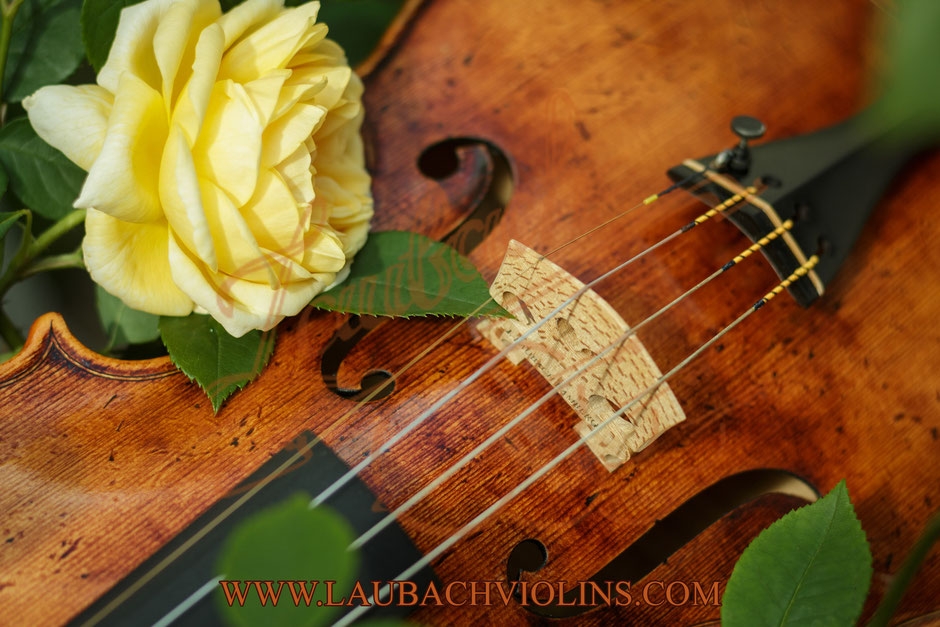
Science is gradually revealing the secrets of the great historical violinmakers like Stradivarius, allowing contemporary instrument makers to copy them. Contemporary violins are also becoming more popular as the limited supply of historical ones drives prices through the roof.
Violinmaking is as much an art as a craft, nothing each violin takes about 200 hours to complete.
A lot of modern instruments have volume, but there’s also to this one’s sound. It’s so mellow. And it’s absolutely even to play on through all its registers. There are no dead spots. It has a fantastic amount of sound.
Prices for old vintage violins are just outrageous. Young players can’t afford those kind of prices. But they need good instruments.
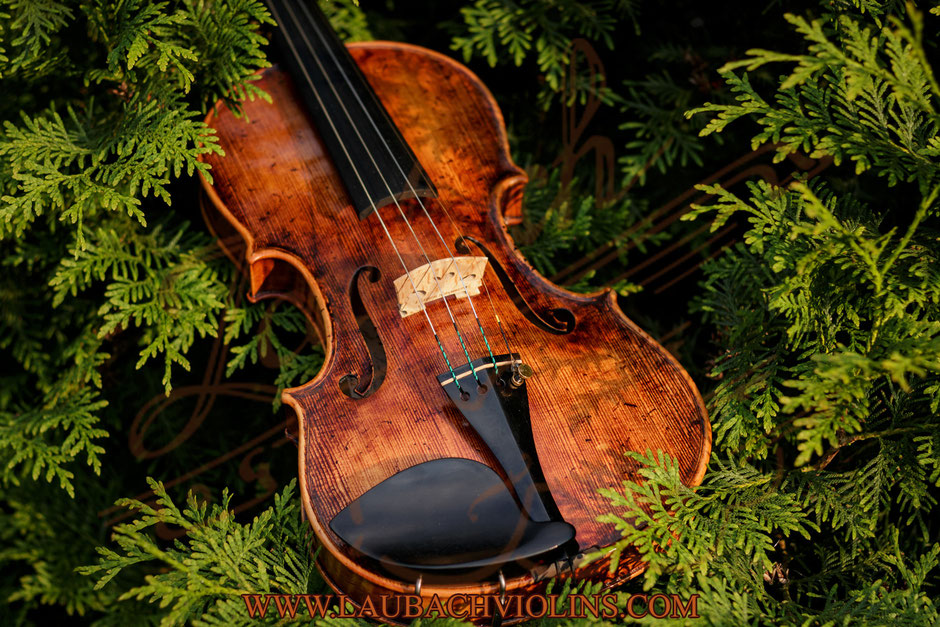
We specialize in string instruments, so every person is our shop is knowledgeable to assist you in selecting the right instrument to fit your needs and budget. However, if you would like to schedule a specific time to work with our violin, viola, or cello specialists, please feel free to contact us for an appointment.
THE old acoustic wood for LAUBACH violin
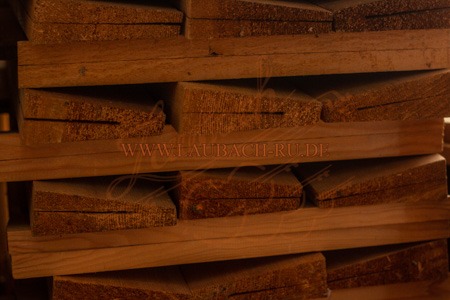
The maple, the spruce, the ebony... Vital substance. It is the bridge from nature to the most subtle manifestations of human sensitivity.
The making of the Laubach`s violin begins long before it starts to have its characteristic shape. It begins with the choice of the tree and the felling, always done when the tree is in its most vegetative phase. Afterwards, it is the turn of drying, until the luthier, who already has the instrument in mind, picks out the pieces, decides how to dispose the flaming, ...
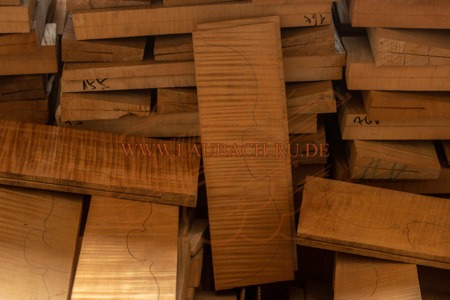
At the moment one chooses the wood there appears a complicity tie that will last until the conclusion of the stringed instrument.
Contact will be constant. Hands will work it accurately, with delicacy and tenderness. Little by little, the resounding properties of the material will raise, shaped as a box with increased surprising acoustic characteristics. Once the master instrument is finished, it will be covered with thin layers of violin varnish, made with natural resins and colourings of vegetal origin. Vital substance.
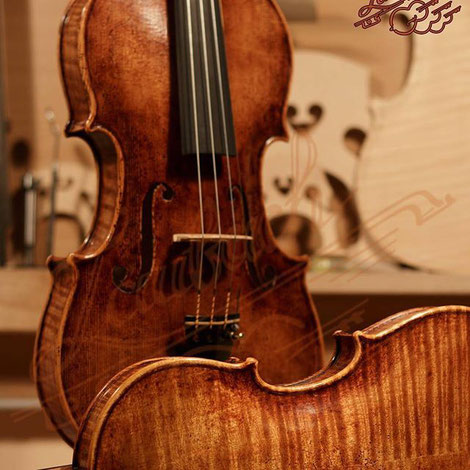
In order to achieve optimal results, I work under the same conditions as the old Italian masters:
I personally select the wood for my new instruments. I acquire it directly from the Velebit mountains of Tyrol or Bosnia, where optimal growing conditions for the wood prevail. This is also where the old best Italian violin makers obtained their acoustic materials. The acoustic wood constitute one of the most essential prerequisites for obtaining the desired tonal characteristics in the finished best master violin .
I have already acquired a selection of wood from which you can personally choose the old wood to be used for your master violin.
I make violins from various models of the old masters, and have also developed my own model, which I will be glad to introduce to you. I will also be happy to use a model according to your own specifications.
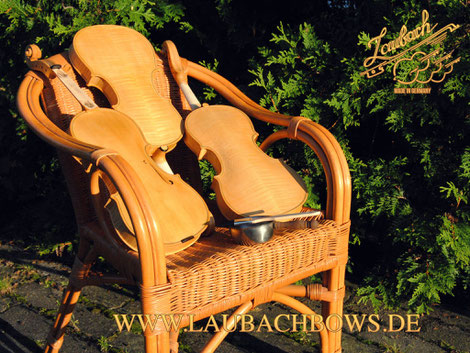
The violin ground and varnish are prepared by me, using old Venetian recipes. In order to attain the same climatic conditions as those experienced by the old Italian masters, I have use a workshop on the Gundelschaeim at Bamberg in Bavaria.
Here, in natural sunlight, the old wood, its acoustic ground, and the violin varnish of the instrument acquire their unique magic.
You can be assured that these methods allow instruments to be created which, as descendants of the great old Italian instruments, can approach the old Italian tonal flair and the magic of the best varnish; they are completely authentic, but far less delicate than the older instruments.
-
Best acoustic wood for fine master violin
Today, almost all fine master violins have maple backs and sides.The wood is cut tangentially ("on the slab") producing a"flame" or "curl" figure. This is the result of the woodfibers having grown in an undulating pattern. When split,the wood looks something like corrugated metal. Whencut, as in a finished instrument, it produces an interestingoptical effect of alternating light and dark flames. Movethe light source and the dark flames will turn light and thelight flames dark.
Figured maple is also used for the fine master viola and cello where it is prized for its appearancerather and momentous acoustical qualities.
Kiln drying is consider to ruin the acoustical properties of the wood. Therefore, very good violin makers use wood from old growthtrees cut during the cold dormant months. Violin makers prefer wood cut from old growth trees, grown at high altitudes on northern slopes Bavarian or Tyrolean Alps.
Immediatelyafter the tree is felled, the trunk is bucked into roundsslightly longer than that needed for the finished pieces.Like slicing a pie, these rounds are split or sawn radiallyinto wedge-shaped billets which are end-sealed, stickeredand stored under controlled conditions for 10 years ormore. The acoustic wood used in the best master violins is at least 50 years old from cutting!
All Master Laubach violins include an individual certificate of authenticity.
Laubach violin certificates include a signed document describing the instrument, dimensions, signatures, seals and color photographs of the front, side, and back of the instrument.
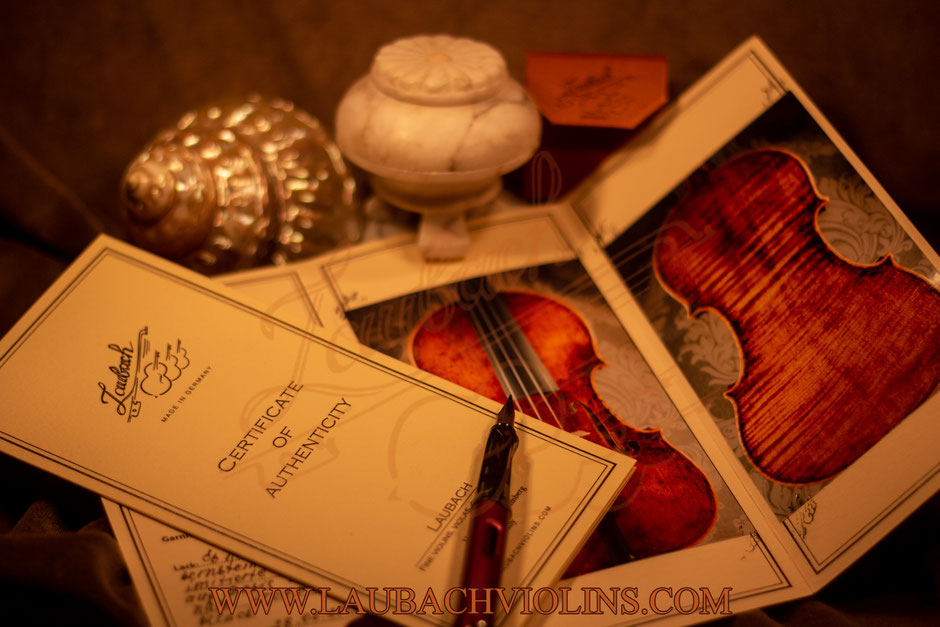
video - Violin Laubach model Limited Edition Antique Master instrument, built to the pattern of Guarneri del Gesù (Cremona 1735) in the old tradition.
-
Buying Your First Master Violin
Buying your first master violin can be an overwhelming experience. There is so much information on the internet to cycle through that many players end up feeling very confused...Here at the Laubach violin workshop, we specialize in master violins, violas, cellos and basses.
With our professional experience in handcrafting master stringed instruments, we, at Laubach violin workshop have worked with many first-time buyers in helping them select an instrument that best suits their needs and that they really enjoy playing.
This means not only finding a good sounding instrument, but also one that has the appropriate setup for a new player. String heights and correct curvature of the bridge are very important aspects.
Comfort and response of the instrument are very important as well.
We have a wonderful playing room for players to audition instruments and bows.
We do our utmost to help our customers simplify and feel confident about their purchases from Laubach violin workshop, especially when it comes to customizing and hand adjusting their desired master instrument (violin, viola or cello) to the musicians needs.
-
A Brief History of the Italian master Violin Instrument
Catguts, Scrapers, Men of violin rosin, Squeakers’ or ‘scurvy thrashing scraping Mongrels.’ That is how the itinerant Italian fiddlers of the 17th century were described, and this serves as a shocking reminder that those sober-suited classic Italian violinists massed importantly in the front line for the symphony orchestra have neither a particularly old nor an entirely respectable classic Italian violn history.
The classic Italian (Cremona, Venice and other) history of the bowed string instruments is another of those tangles of stray possibilities which do not unravel into a logical story. From the 11th century onwards musicologists are confronted by a variety of bowed chordophones in sculptures and pictures and a confusion of names in literature and music. Evidence however suggests that the origin of bowed instruments lies not in those that were plucked but in those that were struck. It is, after all, a logical step from striking a string with a stick to scraping it..
The first known use of the word ‘vyollon’ has been traced back to 1520, but the modern spelling was not used until 1537. This name derives from fides – string. In northern languages this led to vielle, fithele, fithel and fiddle; in the south, to fidula, vidula, vihuela, viol and through vyollon to violin. In the middle of the 17th century, when the design of the violin had been evolved by the makers of Cremona, a distinction was made between ‘melodious rogues’ who played the fiddle for feasts, dancing and other forms of lawful and unlawful entertainment, and violinists who played serious classic Italian or composed music..
By the time of Monteverdi (1567-1643) the Amati family of Cremona was established and was to dominate violin making for the next hundred years. Nicola Amati died in 1684 and he was succeeded by his disciple Antonio Stradivari. By the time Stradivari died the perfected violin had emerged as an important solo instrument as well as an instrument of the orchestra. Viols and viol music now faded away, although signs of their dominion lingered on a while. In the Brandenburg Concerti, written between 1717 and 1723, J.S. Bach scored fro viola da braccia (violin supported by the arm) and viola da gamba (larger and supported by the leg or ankle). The original compass of the consort of viols was founded on the compasses of the different human voices – soprano, alto, tenor, and bass – and that division of bowed string instruments became and has remained the foundation of the symphony orchestra.
In the seething cauldron of social and political events of the late 18th century, music and Italian musical instruments were themselves under close scrutiny. The orchestra itself was growing in size, and playing to larger audiences, and the art of orchestration was developing. The violin, like the viol in its time, was now considered too small-voiced. From about 1770 therefore the violins of the Cremonese produce greater volume and brilliance. The sound post was made stouter, the bass bar enlarged and the neck lengthened and thrown back a few degree. The bridge was also made more arched to take the higher tension of the strings, this having risen from 63 lb to 90 lb. Simultaneously the bow was re-designed.
